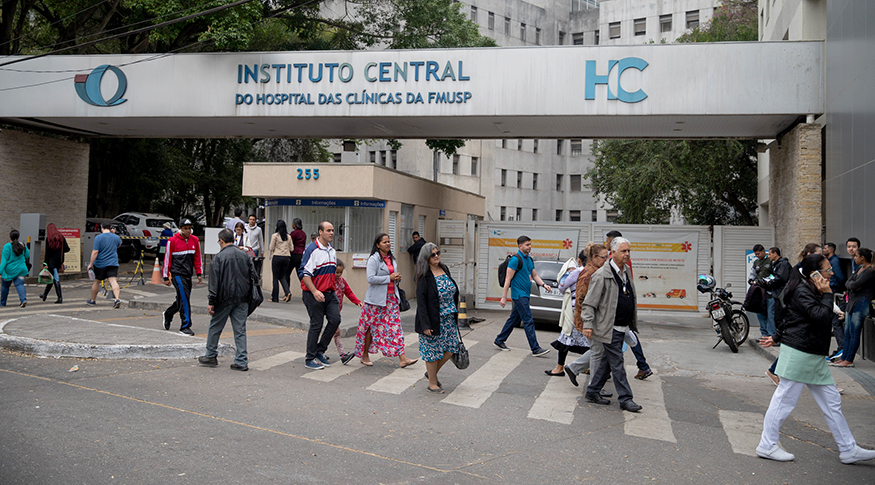Novel Coronavirus
To prevent the spread of Covid-19, IBGE anticipates data on population access to health care
April 07, 2020 03h00 PM | Last Updated: April 08, 2020 09h10 AM

The IBGE anticipated for the Ministry of Health and the Oswaldo Cruz Foundation (Fiocruz) information on the population flow to cities in search of health services. With the data, those agencies will be able to develop public policies, plans and logistics to face Covid-19, a disease caused by the new coronavirus. The results made available preliminarily are part of the survey Area of Influence of Cities - (Regic) 2018, whose full text will be released later this year by the IBGE.
The results at this point of the survey show that, in the country, people need to travel, on average, 72 km for low and medium complexity health care, such as medical and dental consultations, clinical exams, orthopedic and radiological services, physiotherapy and minor surgeries, among other services that do not require hospitalization.
Manaus, the capital of Amazonas, is the city that receives patients who had to travel the longest distances, on average, 418 km for care or procedure of low and medium complexity. Goiânia (GO) is the municipality that serves patients from the largest number of cities, 115 in total. Santa Catarina is the only state where average flows of less than 40 km occur, the smallest in the country, especially the municipality of Chapecó.
“If a city has a regional hospital, it means that it not only serves patients in the municipality where it is located, but also in neighboring cities. The data from this survey helps to measure the impact on the health care system. Hence the importance of knowing how people move in and across the cities”, said the coordinator of Geography at IBGE, Claudio Stenner.
Held every ten years, Regic defines the hierarchy of Brazilian urban centers and delimits the areas of influence associated with them. The survey took place in the second half of 2018 and investigated, among other aspects, the displacement of users of the public and private health network, who leave their municipalities bound for others to access low, medium and high complexity health services.
Patient travels more than 150 km for high-complexity treatment
The survey reveals, on the other hand, that the search for highly complex treatments requires from the patient more than twice as much as the displacement for procedures of low and medium complexity. On average, a person travels 155 km, in Brazil, for specialized treatments of high cost, which involve hospitalization, surgeries, exams such as magnetic resonance and tomography and cancer treatments.
The survey numbers show profound regional differences in the concentration of cities that are a reference in health. While the average displacement in the Southeast and South regions was around 100 km, in which flows are distributed between the capitals and smaller cities in the countryside, in the Northeast the highly complex treatments are concentrated, mainly, in the capitals.
Regic 2018 data also reveal that the states of Roraima and Amazonas had the highest average displacement for high-complexity health treatments, 471 and 462 km, respectively, followed by Mato Grosso with 370 km.
The lowest average displacement occurred in the state of Rio de Janeiro (67 km), where the capital shares patients with the municipalities of Campos de Goytacazes, Volta Redonda and Itaperuna, in addition to some bordering towns from the state of Minas Gerais, such as Muriaé.
Despite the concentration of travels to the capitals, the survey highlights that there are municipalities that exceed state limits. Such is the case of the city of Barretos, in the countryside of São Paulo, for cancer treatments. It receives patients from 122 cities, from eight different states, including cities in Rondônia, Pará and all states in the Central-West Region.
For the manager of IBGE Geographical Networks and Flows, Bruno Hidalgo, these data from Regic, when crossed with those from other health agencies, will provide important information to face the pandemic.
“It is possible to identify, for example, municipalities where overcrowding of health units might occur. The agencies will be able to correlate the data with the number of respirators and check less assisted points in the territory, determining the installation of health care units where necessary. There are countless possibilities for the data use”, he commented.
Other actions agaisnt the new coronavirus
The IBGE has been contributing to actions fighting against the coronavirus since the beginning of the pandemic, when it decided to postpone the Population Census, which was to be carried out this year until 2021. The resources that would be applied in the census operation were made available by the Institute to the Ministry of Health to face the disease.
Last week, the institute also announced a partnership with the Ministry of Health to implement an unprecedented version of the Continuous PNAD, which will monitor the incidence of Covid-19 at national level. The IBGE will continue to provide health agencies with relevant data for disease control.
“In addition to the survey on flows, we also plan to release data on the population's places of purchase to contribute to informed decisions during this period of preventing the spread of the new coronavirus. We will also provide information on the enumeration areas, which were set for the Census,” said the IBGE Director of Geosciences, João Bosco de Azevedo.


















